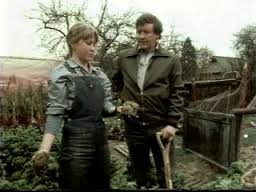This year I’ve developed an allergy to mosquito bites somehow. A single bite blows up to the size of a baseball. Needless to say, as much as I’m outside it’s a big inconvenience! I dislike using DEET for obvious reasons so it’s been research, trial, and error time for a decent safe way to keep the skeeters away. So far, this is what I’ve found that works.
Herb Treatment
I’ve bumped up how much rosemary, mint, and lemongrass I’m growing in the yard. It’s helped significantly reduce the bug population actually. There’s less fleas, ticks, chiggers, and mosquitoes. I keep them trimmed regularly to release the scents (which smell heavenly too) and if I don’t need to trim them I’ll still brush against the plants. The extra herbs also help make my own bug b gone spray.
Bug Repellent Spray
This spray also works great as a flea treatment on your animals and is completely safe. I checked with my vet. You can use a crock pot or just let the tea steep in the sun! Fresh herbs work but I’ve found that dried ones seem to pack more of a punch since I can put a higher concentrate in.
Ingredients: 1C rosemary or lavender, 1C mint, 1C lemongrass (all dried or double if fresh)
Directions: Warm 3C water and mix the herbs into it. In a crockpot, allow to steep 24hours. If using the sun, 3 days at least seem to work. Strain tea and put in a dark container to store. In a spray bottle mix 4parts tea to 1part vodka/rubbing alcohol and 1part apple cider vinegar. Just spray as needed!
Mosquito Trap
Yes it works! And it also will help trap flies too. Everything you’ll need to make it you already have probably.
Supplies: empty plastic 2liter bottle, packet of yeast, sugar, and tape
Directions: Cut the bottle like you did making the Bait Trap, invert the top inside the bottom half & tape into place. In a pan, warm 1C water until it’s hot to the touch. Dissolve 2Tbspn of sugar into the water. Then dissolve the packet of yeast into the water. Pour the water mixture into the bottle making sure to leave only about 1/4 inch between the water and the end of the funnel spout. As the yeast eats the sugar it’ll release CO2 and attract the pests!
Change in Diet
For some people this works better than others honestly. Mosquitos, ticks, fleas, and chiggers hate the taste of onions, garlic, and asafoetida, So since these pests dine on our blood it only makes sense that they’ll avoid those who taste like these things right? Just by bumping up my consumption, I’ve watched other people get eaten up by mosquitoes even when they’re wearing DEET sprays while I’m left alone with no spray at all!
Perfume Stinks Pretty to Pests
I know there’s a lot of people who can’t go without perfumed products whether it’s a spray, wash, deodorant, or laundry soap. This time of year, all the pretty smell is going to do is attract bugs. You’re not going to smell bad if you bath regularly and go with lower perfumed products. Plus, you should be bathing more anyway to wash the dried sweat off your body which is another attractant for skeeters.






